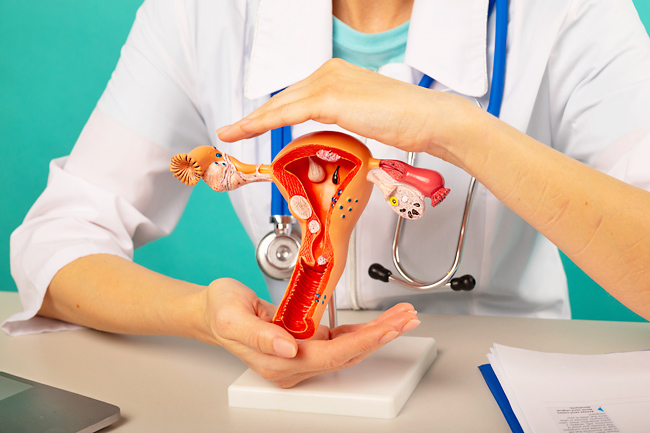ANN/THE STAR – The physical toll of polycystic ovary syndrome (PCOS), a hormonal disorder impacting 12 per cent of women worldwide, is compounded by psychological challenges such as anxiety, depression, and negative body image.
Recent international studies have uncovered the elevated frequency and severity of depressive symptoms linked to PCOS, highlighting the pressing need for improved emotional support and counseling for those affected.
The infertility and diminished fertility stemming from PCOS are exacerbating distress, especially in cultures where motherhood is culturally expected, placing undue responsibility on women for their fertility struggles.
The 2023 Congress of the Asia Pacific Initiative on Reproduction (ASPIRE) held in Adelaide, Australia, heard on September 7, 2023 of ethnic diversity in the global prevalence of PCOS, with a greater presence of the condition in women in India, Pakistan, Nepal, Afghanistan, Bangladesh, Bhutan, Iran, Sri Lanka and the Maldives.
South Asian women with PCOS are also at an increased risk of developing cardiometabolic conditions such as stroke, heart attack, diabetes and liver disease.
Symptoms of PCOS first appear around puberty and persist through and beyond reproductive years.
They include hormonal imbalances causing dermatological issues, such as excessive hair growth or hair loss from the scalp, and acne, along with menstrual disorders and infertility, which combine to create adverse psychological outcomes.


A MULTIFACETED CONDITION
PCOS can also lead to other health problems, including early onset diabetes and cardiovascular (heart) disease.
PCOS Society of India founder and president Dr Duru Shah said PCOS is a complex reproductive, endocrine and metabolic disorder with puzzling causes that may include genetics, lifestyle or environmental factors.
She said delays in diagnosis, particularly in girls and young women, were common in some countries, including India.
“Anxiety and depression are common in PCOS sufferers, especially over cosmetic issues such as obesity, hirsutism (excessive hair growth) and acne, and also due to infertility associated with the condition,” she explained.
“Body shaming is another confronting issue for these girls and women, contributing to body image and self-esteem challenges.
“Obesity in adolescents persists in adulthood, leading to the major health issues we see in women with PCOS.”
Dr Shah has advocated to India’s Health Ministry to insist on an hour of exercise in schools and the provision of healthy snacks in school canteens.
PCOS Society of India vice-president and Fertility Preservation Society of India president Dr Madhuri Patil said there were significant differences in PCOS symptoms across race or ethnic groups, and geographic locations.
“We suspect genetic factors are involved in clinical manifestations of PCOS and metabolic responses between various racial and ethnic groups,” she explained.
“As a result, South Asian and East Asian women may differ in metabolic function from each other and white women residing in the same region.
“The actual causes of these racial differences in PCOS outcomes remain unclear, but there is a need to highlight the benefits of healthy lifestyle strategies to prevent excess weight gain.”
The PCOS Society of India has mounted a major community awareness campaign to help girls and women learn more about PCOS and its ramifications. The prevalence of PCOS in Chinese women has been increasing since 2010 with variations across different regions, occupations and age groups, with similar upward trends observed in other countries. The new 2023 evidence-based international guidelines for the diagnosis, assessment and treatment of PCOS were also outlined at the ASPIRE Congress.
The guidelines were developed by more than 1,000 healthcare professionals, including researchers, academics, multidisciplinary clinicians, patients and consumer groups.
NEW GUIDELINES UNVEILED
Lead author and endocrinologist Professor Dr Helena Teede said the guidelines addressed the misconception that PCOS was an isolated reproductive condition, but instead, an endocrine disorder with psychological, cardiometabolic and reproductive effects.
Professor Teede, who is also director of Monash University’s National Health and Medical Research Council Centre for Research Excellence in PCOS in Australia, said that up to 70 per cent of women with PCOS could be diagnosed based on the presence of both menstrual irregularity and hyperandrogenism, which could include acne, female pattern hair loss or hirsutism.
“But if adults do not have one of those features, you can do an ultrasound or an anti-müllerian hormone (AMH) blood test, which is now recommended,” she explained.
Professor Teede also stressed the importance of diagnosing PCOS early, particularly in adolescence.
She said if adolescents had only one feature of PCOS, they should be defined as at risk, and after the age of 20, they should be reassessed and have an ultrasound or AMH test.
In other key changes in the guidelines, cardiovascular disease is now considered a core feature of PCOS, with all women recommended to undergo a lipid profile at diagnosis, regardless of age and BMI (body mass index).
Another new recommendation includes being aware of male first-degree relatives of women with PCOS in terms of potential metabolic syndrome, type 2 diabetes and hypertension (high blood pressure).
Professor Teede said that family studies have suggested a 2.3-fold increased risk for type 2 diabetes and a 1.4-fold increased risk for metabolic syndrome in fathers of women with PCOS, and a 3.9-fold increased risk for dyslipidaemia in their brothers.






